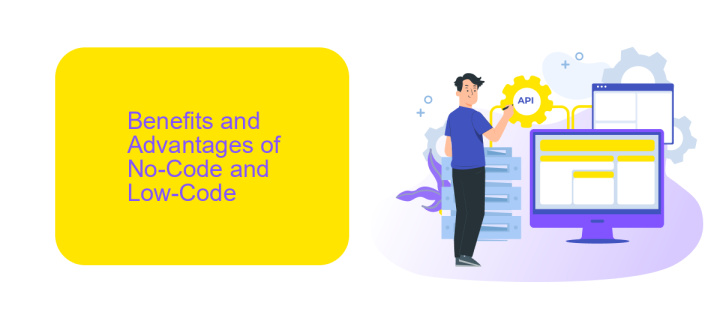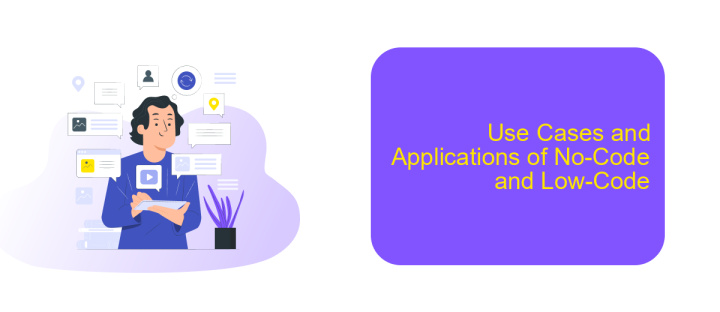What is No-Code Low-Code
No-Code and Low-Code platforms are revolutionizing the way applications are developed by enabling users to create software with minimal or no coding knowledge. These tools empower businesses to quickly prototype, build, and deploy applications, significantly reducing development time and costs. In this article, we will explore what No-Code and Low-Code are, their benefits, and how they are transforming the tech landscape.
Introduction to No-Code and Low-Code
No-code and low-code platforms are revolutionizing the way businesses develop applications by enabling users to create software solutions without extensive coding knowledge. These platforms provide intuitive interfaces, drag-and-drop tools, and pre-built templates that simplify the development process, making it accessible to non-technical users.
- No-code platforms: Allow users to build applications entirely without writing any code. They are ideal for creating simple apps quickly.
- Low-code platforms: Require minimal coding, offering more flexibility and customization options. They cater to both developers and non-developers.
One of the key benefits of no-code and low-code platforms is the ease of integrating various services and APIs. Tools like ApiX-Drive facilitate seamless integration, allowing users to connect different applications and automate workflows without needing to write complex code. This empowers businesses to innovate rapidly and efficiently, reducing the time and cost associated with traditional software development.
Benefits and Advantages of No-Code and Low-Code

No-Code and Low-Code platforms offer numerous benefits, making them increasingly popular among businesses and developers. One of the primary advantages is the significant reduction in development time. By using visual interfaces and pre-built components, these platforms allow users to create applications much faster than traditional coding methods. This leads to quicker time-to-market and the ability to respond rapidly to changing business needs.
Another key benefit is the accessibility they provide to non-technical users. With No-Code and Low-Code solutions, individuals without programming expertise can build and deploy functional applications, democratizing the development process. Additionally, platforms like ApiX-Drive simplify the integration of various services and applications, enabling seamless data flow and automation. This not only enhances operational efficiency but also reduces the dependency on specialized IT staff, allowing businesses to allocate resources more effectively.
Types and Capabilities of No-Code and Low-Code Platforms

No-code and low-code platforms are revolutionizing the way applications are developed by enabling users to create software with minimal or no coding experience. These platforms cater to various needs, from simple website builders to complex enterprise applications.
- Website Builders: Tools like Wix and Squarespace allow users to create and customize websites without coding.
- App Development: Platforms such as Bubble and Adalo enable the creation of mobile and web applications through drag-and-drop interfaces.
- Automation: Services like ApiX-Drive facilitate the integration of various applications, automating workflows without the need for custom coding.
- Data Management: Tools like Airtable and Google Sheets help in organizing and managing data with ease.
- Business Process Management: Platforms such as Appian and OutSystems offer solutions for automating and optimizing business processes.
These platforms provide a range of capabilities, including user-friendly interfaces, pre-built templates, and seamless integration options. For instance, ApiX-Drive allows users to connect different apps and automate tasks, significantly enhancing productivity. This democratization of software development empowers businesses to innovate swiftly and efficiently.
Use Cases and Applications of No-Code and Low-Code

No-code and low-code platforms have revolutionized the way businesses develop applications by enabling non-technical users to create functional software solutions. These platforms are particularly beneficial for small to medium-sized enterprises that lack extensive IT resources.
One of the primary use cases for no-code and low-code platforms is the rapid development of internal tools. Companies can quickly build custom dashboards, CRM systems, and project management tools tailored to their specific needs. Additionally, these platforms are ideal for creating minimum viable products (MVPs) to test new business ideas without significant investment.
- Automating business processes
- Developing customer-facing applications
- Creating custom integrations between existing software
- Building data collection and analysis tools
Another significant application is in the realm of integrations. Services like ApiX-Drive make it simple to connect various software systems without writing a single line of code. This enables businesses to streamline operations and improve efficiency by automating workflows and data synchronization across different platforms.
Future Trends and the Impact of No-Code and Low-Code
The future of no-code and low-code platforms is poised to revolutionize the way businesses approach software development. As these technologies continue to evolve, they will democratize access to software creation, allowing non-technical users to build and deploy applications rapidly. This shift will enable organizations to respond more swiftly to market changes, reduce development costs, and foster innovation. Additionally, the integration capabilities of no-code platforms, such as ApiX-Drive, will streamline workflows by connecting disparate systems and automating routine tasks, further enhancing business efficiency.
In the coming years, we can expect no-code and low-code platforms to integrate advanced technologies like artificial intelligence and machine learning, making them even more powerful. These enhancements will provide users with predictive analytics, intelligent automation, and personalized user experiences. Moreover, the rise of citizen developers—individuals who create applications without formal coding training—will reshape the IT landscape, bridging the gap between business needs and technical solutions. As a result, no-code and low-code platforms will play a crucial role in driving digital transformation across various industries.
FAQ
What is No-Code/Low-Code?
Who can benefit from No-Code/Low-Code platforms?
What are the limitations of No-Code/Low-Code platforms?
Can No-Code/Low-Code platforms integrate with other software?
Is it secure to use No-Code/Low-Code platforms for business applications?
Apix-Drive is a universal tool that will quickly streamline any workflow, freeing you from routine and possible financial losses. Try ApiX-Drive in action and see how useful it is for you personally. In the meantime, when you are setting up connections between systems, think about where you are investing your free time, because now you will have much more of it.

